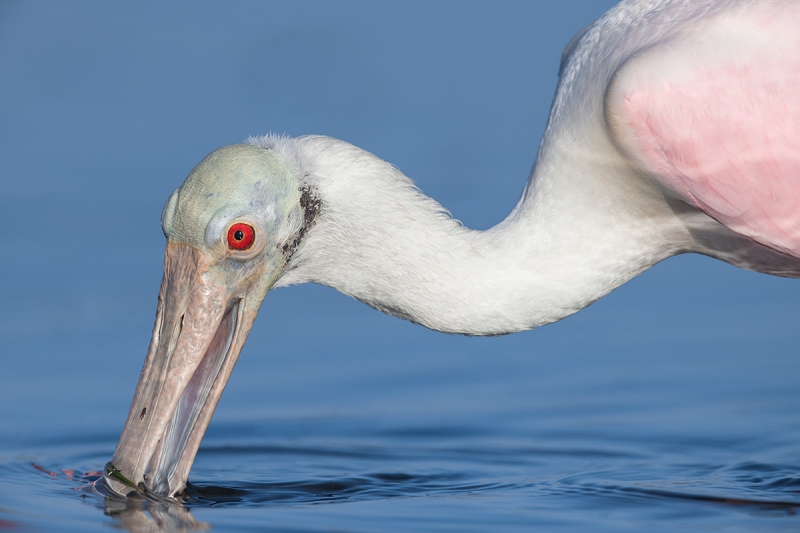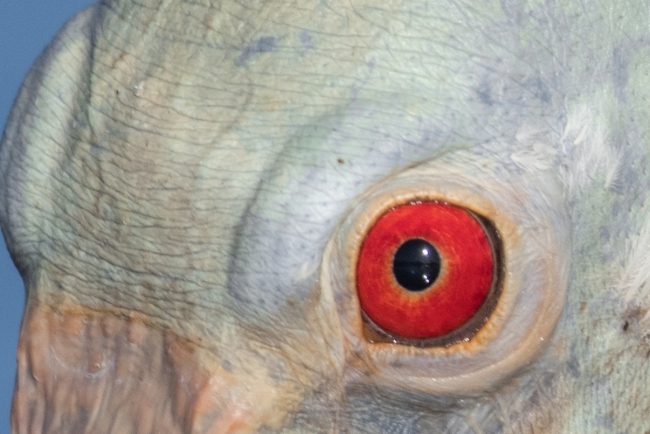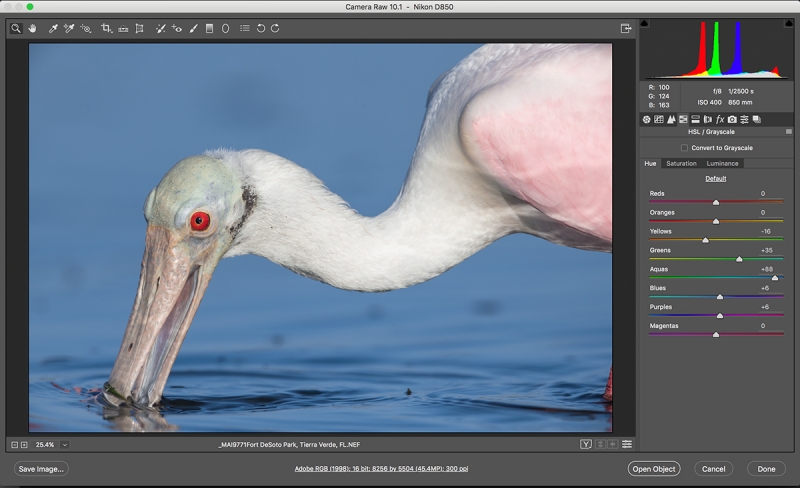Stuff
The pool was up to a still very chilly 76 degrees when I did my 1/2 mile swim on Wednesday afternoon. I had on my neoprene vest, my neoprene booties, and two neoprene caps. I was only cold when I got out!
DeSoto Early Winter IPT Late Registration Discount!
Please e-mail me directly if you are interested in learning about the substantial late registration discount for this IPT. Because both folks who have signed up have expressed an interest in learning to micro-adjust their gear, I will be bringing my LensAlign unit and the complete lighting set-up. Do consider joining us if you would like to do the same. See below for details. From Ed Dow via blog comment: For anyone contemplating the Fort Desoto trip, jump on it. I don’t think anybody knows that area like Artie. I was pretty much new to bird photography and he got me into position to create many shots that I treasure.
|
|
Nikon 500mm f/5.6 PF Lens AF Fine-Tune Values |
Nikon 500mm f/5.6 PF Lens AF Fine-Tuning
I spent 90 minutes on Wednesday morning AF Fine-tuning my new 500 PF indoors with my three Nikon bodies. I used the lights with my LensAlign device and FocusTune on my laptop. Late in the afternoon I moved the lighting set-up outdoors to the driveway to fine tune at 700mm and than at 840mm. With Jim’s help I set up a bridge table with all the bodies, the two TCs, and my laptop on it. The afternoon session took only about an hour. I was too nit-picky in the morning.
Note that Fine-tune values in the +/- one or two range are pretty much insignificant. Plus or minus three or four is right on the edge. Fine-tune values of five or more are significant. I used my #2 TC-E14 as my 600 is fine-tuned with my #1 TC-E14.I fine-tuned the TC-E17 only with my main, souped up D850 as I would only be using that combination only when my 600 was in the car, the hotel room, or the garage …
Do understand the lower micro-adjustment values do not indicate that a given camera body/TC/lens combination is “better” than a similar combination with higher micro-adjustment values. All that you are doing is optimizing AF performance. All things being equal, sharp images made at +17 or -9 will be just as sharp as images made at +2 or -1.
For me, fine-tuning my gear not only results in sharper images but in peace of mind as well. That is why I put in the time and effort.
BAA IPTs
- The 2018 Fort DeSoto Early Winter IPT/Thursday December 7 through the morning session on Monday December 10, 2018: 3 1/2 DAYS: $1549. Limit 8/Openings: 5.
- Falklands Land-based IPT DEC 22, 2018 thru JAN 5, 2019/Two Weeks: Sold out.
- 2019 San Diego 4 1/2-DAY BIRDS AS ART Instructional Photo-Tour (IPT) SUN JAN 20, 2019 thru and including the morning session on THURS JAN 24: 4 1/2 days: $2099. (Limit: 8/Openings: 1) Introductory Meet and Greet at 7:00pm on the evening before the IPT begins: THURS, 6 DEC.
- The 2019 Hooptie Deux/Roseate Spoonbill Boat 3 1/2 DAY IPT — FEB 16 thru 19, 2019: $2599.00. Limit: 5 photographers/Openings: 2.
- The New, Expanded 2019 UK Puffins, Gannets, & Red Kites IPT. Thursday June 27 (from EDI) through Tuesday, July 9, 2019 (on the ground; fly home on Wednesday July 10.): $9,999. Limit 10 photographers — needs four to run. Co-leader: Peter Kes.
- The GALAPAGOS Photo Cruise of a Lifetime IPT/The Complete Galapagos Photographic Experience. July 23 to August 6, 2019 on the boat. 13 FULL and two half-days of photography: $14,499. Limit: 12 photographers/Openings: 4.
BIRDS AS ART
BIRDS AS ART is registered in the U.S. Patent and Trademark Office.
Money Saving Reminder
If you need a hot photo item that is out of stock at B&H, would enjoy free overnight shipping, and would like a $50 discount on your first purchase, click here to order and enter the coupon code BIRDSASART at checkout. If you are looking to strike a deal on Canon or Nikon gear (including the big telephotos) or on a multiple item order, contact Steve Elkins via e-mail or on his cell at (479) 381-2592 (Eastern time) and be sure to mention your BIRDSASART coupon code and use it for your online order. Steve currently has several D850s in stock along with a Nikon 600mm f/4 VR. He is taking pre-orders for the new Nikon 500 P and the Nikon Z6 mirrorless camera body.
Gear Questions and Advice
Too many folks attending BAA IPTs and dozens of photographers whom I see in the field and on BPN, are–out of ignorance–using the wrong gear especially when it comes to tripods and more especially, tripod heads… Please know that I am always glad to answer your gear questions via e-mail. Those questions might deal with systems, camera bodies, accessories, and/or lens choices and decisions.
|
|
|
This image was created on the morning of September 27, 2018 on the last day of the Fort DeSoto Fall IPT. I used the Induro GIT 304L/Mongoose M3.6-mounted Nikon AF-S NIKKOR 600mm f/4G ED VR AF lens, the Nikon AF-S Teleconverter TC-14E III, and my souped up Nikon D850. ISO 400. Matrix metering at about zero: 1/2500 sec. at f/8 in Manual Mode. NATURAL AUTO WB at 8:41am on a dead-clear morning. Center/Group (grp)/Shutter Button/Continuous (AI Servo with Canon) AF as framed was active at the moment of exposure. The array was centered on the bird’s neck just behind and below its face. Nikon Focus Peaking fine-tune was a significant +5. See the Nikon AF Fine-tune e-Guide here. Click on the image to enjoy a larger version. Roseate Spoonbill foraging/tight head, while seated |
What to Do When the Spoonbills Get Too, Too Close
The image above was made at the very end of the sitting-in-the-water-with-spoonbills session at Desoto in September. As it was hard for me to move, As the birds kept getting closer and closer I decided to add the TC-E14 and go for tight head shots. (The TC had been in a fanny pack that I had draped around my neck for safe-keeping.) With the birds so close and me worried about light angle, I decided to go with Center Group AF rather than trying to move the AF point around as I have been doing for the whole bird portraits when the spoonies were farther away. With the image above I wish that I had a bit more room at the bottom of the frame for the virtual bill tip. But the incredible detail and sharpness of this one made it a solid keeper even with my minor compositional misgivings.
Favorite Part of this Image?
What is your favorite part of this image. I’d bet that nobody picks my favorite part … My answer in two or three days.
|
|
Unsharpened 100% crop of Roseate Spoonbill foraging/tight head, while seated |
AF Fine-tune: plus five
I would not have wanted to have the AF Fine-tune value at zero for this one … AFA Fine-tuning is a pain in the a _ _ even with Nikon. With Canon you can wind up pulling your hair out. Getting good at micro-adjusting and fine-tuning takes hours and hours of study and practice. But the results are well worth it. Both of my guides (see immediately below) flatten the learning curve by miles …
Reikan FoCal does not have True Parallel Alignment; that is why I use and promote only LensAlign/FocusTune. The techniques in LensAlign/FocusTune Micro-Adjusting Tutorial e-Guide work for all SLRs that feature AF adjustments. My Nikon AF Fine-tune e-Guide makes things a lot easier for D850 and D5 folks.
|
|
Photoshop screen capture: moving the Hue slider on the HSL tab! |
More on Fine-tuning the BLUEs
During the RAW conversion I tried something new when working on the BLUE water. Previously I had played with the BLUE channel on the HSL (Hue/Saturation/Luminance) tab. In an effort to match the BLUEs in the RAW file perfectly, I first reduced the BLUE luminance 12 points by moving the slider to the left. Then I made adjustments on the Hue sliders to the various channels as seen above. I rarely if ever touch the Hue sliders. But this time I was able to match the BLUEs in the RAW (NEF) file exactly simply by eye-balling things as I moved the Hue slider.
You can see the BKGR clean-up as you are looking at the original in the Photoshop screen capture immediately above.
Spoonbills and DeSoto IPTs
Over the years, virtually every DeSoto IPT group has had a least one good chance on Roseate Spoonbill. Is a close encountered guaranteed? Not by any means. But oftentimes we are so, so lucky that I think my late-wife Elaine is calling the shots from above …
|
Fort DeSoto in early winter is rife with tame birds. Click on the composite to enjoy a larger version. Clockwise from upper left to center: Long-billed Curlew, Marbled Godwit, Caspian Tern, Great Egret, Sandwich Tern with fish, Willet, Black-bellied Plover threat display, Snowy Egret, 2-year old Yellow-Crowned Night-Heron, juvenile Yellow-Crowned Night-Heron. |
The 2018 Fort DeSoto Early Winter IPT/Thursday December 7 through the morning session on Monday December 10, 2018: 3 1/2 DAYS: $1549. Limit 8/Openings: 6.
Fort DeSoto, located just south of St. Petersburg, FL, is a mecca for migrant shorebirds and terns in early winter. There they join hundreds of egrets, herons, night-herons, and gulls that winter on the T-shaped peninsula. With luck, we may get to photograph two of Florida’s most desirable shorebird species: Marbled Godwit and the spectacular Long-billed Curlew. Black-bellied Plover and Willet are easy, American Oystercatcher almost guaranteed. Great Egret, Snowy Egret, Great Blue Heron, Tricolored Heron, and White Ibis are easy as well and we will almost surely come up with a tame Yellow-crowned Night-Heron or two. We may very well get to see and photograph the amazing heron/egret hybrid that has been present for three year. And we should get to do some Brown Pelican flight photography. In addition, Royal, Sandwich, Forster’s, and Caspian Terns will likely provide us with some good flight opportunities as well. Though not guaranteed, Roseate Spoonbill and Wood Stork might well be expected. And we will be on the lookout for a migrant passerine fallout in the event of a thunderstorm or two.
On the IPT you will learn basics and fine points of digital exposure and to get the right exposure every time after making a single test exposure, how to approach free and wild birds without disturbing them, to understand and predict bird behavior, to identify many species of shorebirds, to spot the good situations, to choose the best perspective, to see and understand the light, and to design pleasing images by mastering your camera’s AF system. Most importantly you will surely learn to evaluate wind and sky conditions and understand how they affect bird photography. And you will learn how and why to work in Manual mode (even if you’re scared of it).
There will be a Photoshop/image review session after lunch (included) each day. That will be followed by Instructor Nap Time.
The best airport is Tampa (TPA). Once you register, you will receive an e-mail with the hotel information. Do know that it is always best if IPT folks stay in the same hotel (rather than at home or at a friend’s place).
A $500 deposit is due when you sign up and is payable by credit card. Balances must be paid by check after you register. Your deposit is non-refundable unless the IPT sells out with eight folks so please check your plans carefully before committing. You can register by calling Jim or Jennifer during weekday business hours at 863-692-0906 with a credit card in hand or by sending a check as follows: make the check out to: BIRDS AS ART and send it via US mail here: BIRDS AS ART, PO BOX 7245, Indian Lake Estates, FL 33855. You will receive a confirmation e-mail with detailed instructions, clothing, and gear advice. Please remember that the meet and greet will take place at 7:30 on THURS, 6 DEC. Please shoot me an e-mail if you plan to register or if you have any questions.
|
Obviously folks attending the IPT will be out in the field early and stay late to take advantage of sunrise and sunset colors. The good news is that the days are short in December. Click on the composite to enjoy a larger version. Clockwise from upper left to center: Long-billed Curlew, juvenile Tricolored Heron, Marbled Godwits, Great Blue Heron, juvenile Pectoral Sandpiper, Wood Stork, smiling Sea Scallop, Ruddy Turnstone scavenging needlefish, Great Blue Heron sunset silhouette at my secret spot, and southbound migrant tern flock blur. |
Early and Late
Getting up early and staying out late is pretty much a staple on all BIRDS AS ART Instructional Photo-Tours; on this particular trip we will get lots of sleep as the days are short. Being in the field well before the sun comes up and staying out until sunset will often present unique photographic opportunities, opportunities that will be missed by those who need their beauty rest. I really love it when I am leaving the beach on a sunny morning after a great session just as a carful or two of well-rested photographers arrive.
Help Support the Blog
Please help support my efforts here on the blog by remembering to click on the logo link above each time that you shop Amazon. That would be greatly appreciated. There is no problem using your Prime account; just click on the link and log into your Prime account. With love, artie
If In Doubt …
If in doubt about using the BAA B&H affiliate link correctly, you can always start your search by clicking here. Please note that the tracking is invisible. Web orders only. Please, however, remember to shoot me your receipt via e-mail.




Please Remember to use my Affiliate Links and to Visit the New BAA Online Store 🙂
To show your appreciation for my continuing efforts here, we ask, as always, that you get in the habit of using my B&H affiliate links on the right side of the blog for all of your photo and electronics purchases. Please check the availability of all photographic accessories in the New BIRDS AS ART Online Store, especially the Mongoose M3.6 tripod head, Wimberley lens plates, Delkin flash cards and accessories, and LensCoat stuff.
As always, we sell only what I have used, have tested, and can depend on. We will not sell you junk. We know what you need to make creating great images easy and fun. And please remember that I am always glad to answer your gear questions via e-mail.
I would of course appreciate your using our B&H affiliate links for all of your major gear, video, and electronic purchases. For the photographic stuff mentioned in the paragraph above, and for everything else in the new store, we, meaning BAA, would of course greatly appreciate your business. Here is a huge thank you to the many who have been using our links on a regular basis and those who will be visiting the New BIRDS AS ART Online Store as well.
Be sure to like and follow BAA on Facebook by clicking on the logo link upper right. Tanks a stack.
Typos
In all blog posts and Bulletins, feel free to e-mail or to leave a comment regarding any typos or errors. Just be right :).




















Fun action shot. My favorite element is the pink feather detail on right side, which complements and enhances the head shot with a touch of “roseate” and just enough lift to be seen as distinct feathers.
Thanks Steve, I like it too 🙂
a
And for some reason they are directly aligned between the sun and the bird!
My favorite part: You can see two idiots sitting in the water in the reflection off the pupil of the bird’s eye.
🙂
a
Good morning Artie,I will go with the forehead
because of the sharpness and detail in the surrounding area. You even show that detail in the question.
I like the adjoining ripples below the spoonbill’s neck.
As usual, the whole image looks excellent and cleaned up really well.
All the best.
Weird to say, perhaps, but the bird’s tongue, with its subtle coloring and striations, is what had me taking a longer look.
My favorite part is the S shape composition – I love the movement from where the eye starts at the beak in the water and then gracefully moves over the bird’s neck and then exiting on the beautiful pink wings.
Thanks Therese, I like the S-shape too.
with love, artie
My favorite part is the surface tension of the water on the bill tip. Could that be your favorite?
Could be. Or not …
with love, artie
Two small things I like.
1) I really like that the pupil in the eye shows the bird looking forward, not at the camera. That just adds something for me!
2) I also like the movement in front and behind the bill. Showing action and pleasing design in water behind the bill.
Thanks Warren. Folks are getting close to my favorite part. Good point on the eye.
with love, artie
Favorite part: Reflection of the beak where it dives into the water….
Thanks for commenting. Your favorite is not my favorite.
with love, artie